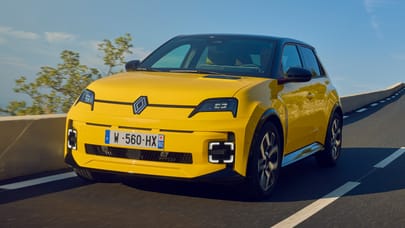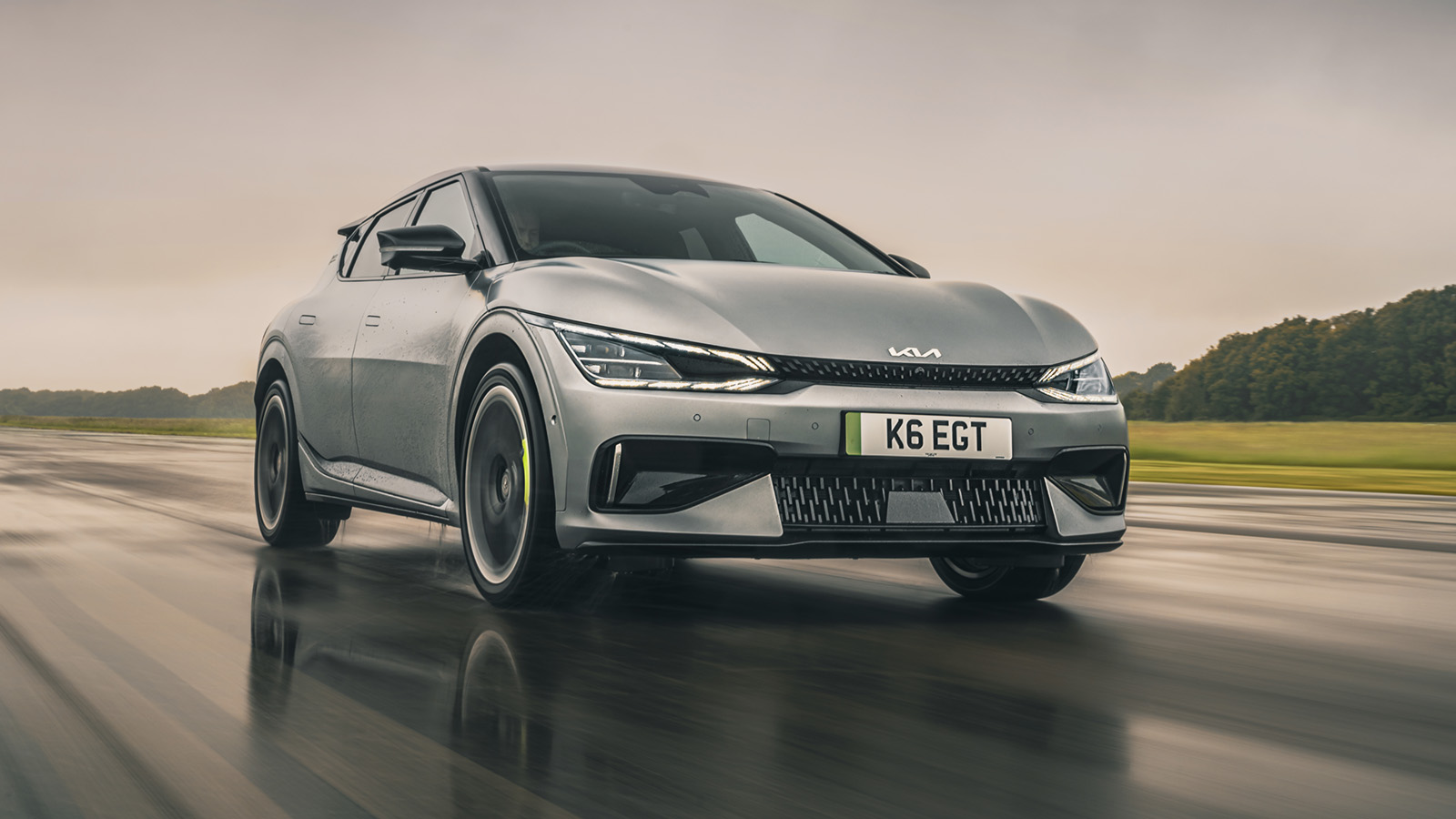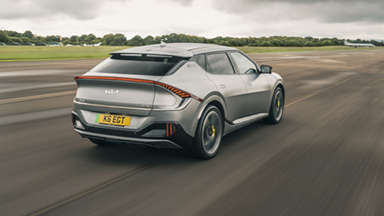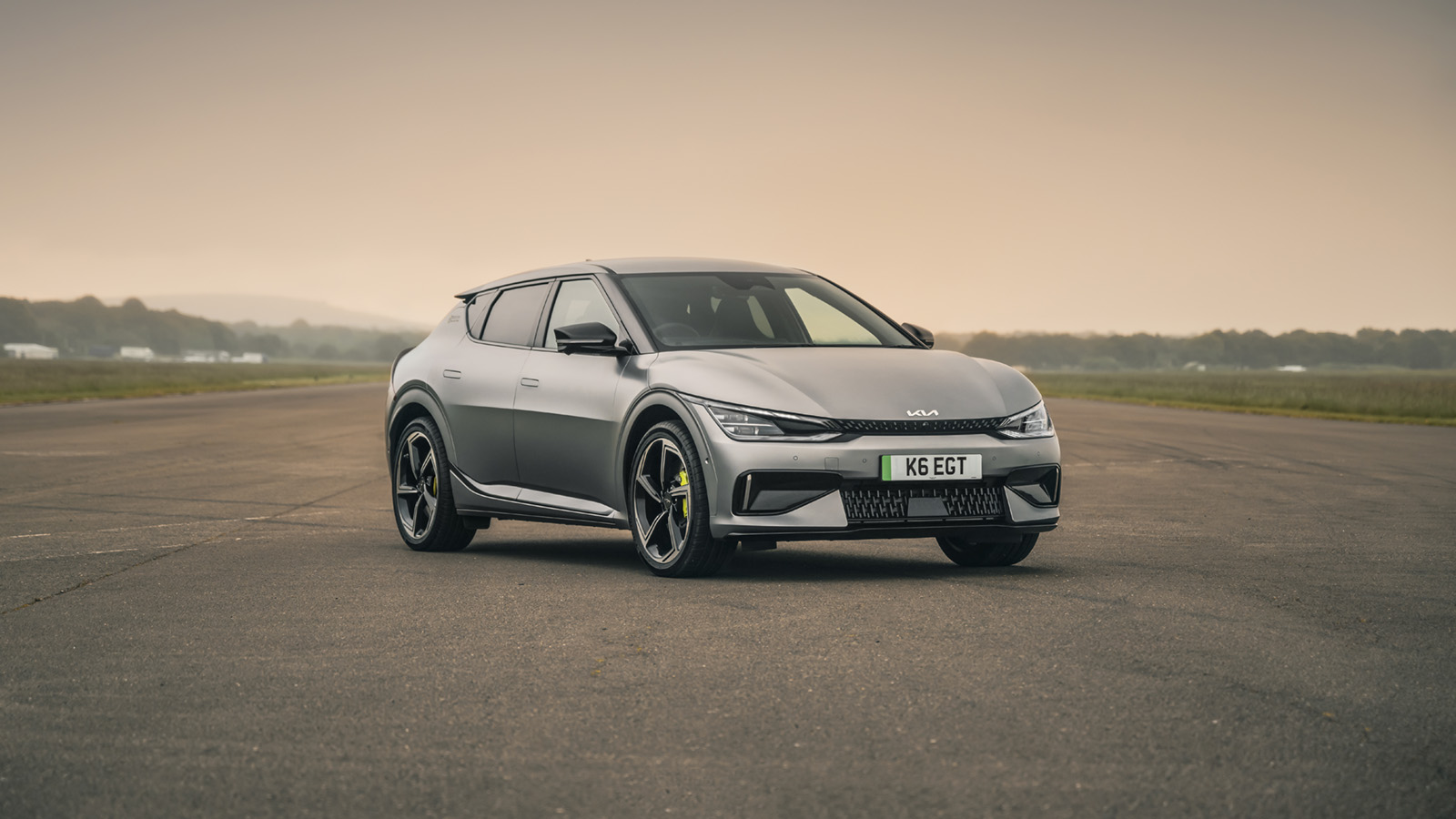
How exciting, a new trim level.
Actually you'll find that this is more than just a mere trim update, it's the cherry on Kia’s EV6 cake – the GT version of the car is a 162mph, 577bhp dual-motor beast that replaces the suddenly old-fashioned looking petrol V6 Stinger as the company halo. We rather like the EV6 and its Hyundai Ioniq 5 cousin.
The GT is important – as the spiciest EV6 it's billed as having “first-class long-distance travel capabilities”, a claim liberally doused by the fact that 50 miles of range have been lopped off to create Kia’s most powerful ever car.
The most powerful Kia ever?!
Well it’s not an auspicious list, let’s face it. After the V6 Stinger you’ve got, what, a few 1.0-litre Picantos and a Ceed estate to contend with? Maybe an old diesel Sedona. But yes, the most powerful ever Kia – 577bhp! Who really needs all of those horses in a family SUV?
What makes it special?
The EV6 offered a solid base – great practicality, amazing amounts of rear leg room – but Kia has given the whole thing a decent going over to create the right sense of atmosphere. There’s an electronic LSD to keep things in check, electronic adaptive damping on the suspension that adjusts the ride between Eco, Normal and Sport settings, and a pedal-to-the-metal GT mode engaged by pressing the giant green (or is it yellow?) button on the steering wheel.
Otherwise there are a raft of interior and exterior upgrades to make the EV6 GT feel a bit special. The exterior ones are subtler, with upgraded bumpers, 21in alloy wheels and a neat-looking spoiler.
Neon brake calipers are the real sign that something is going on under the skin. Inside you get suede-trimmed bucket seats with brightly coloured green (seriously, but is it actually yellow?) piping and some stripy bits on the dashboard. It’s just about a nice enough interior that it can wear its price tag without shame.
Does it drive as well as it goes on paper?
Now there’s the £61,595 question. We must however mention the caveat that we drove a final prototype version of the car (production starts in September and the first cars will be delivered towards the end of the year), which was physically in its final form but still receiving software tweaks and upgrades, which of course are increasingly transformative these days.
Get past the immediate crushing range anxiety that anything past 10 per cent throttle induces and you’re rewarded with a violent shove of acceleration that cuts through anything else that might be going on in the world. It’s a crazy business as both motors spool straight up without delay, and all you can do is hang on. It’s a real party piece, but most passengers will only let you show them once.
Get to a corner and it’s all the car can do to hang on – the ride is fairly refined in Eco and Normal modes, but as the suspension is hardened up for maximum sportiness and minimum roll it all gets a little busy. Physics can only be held at bay for so long, and this is a 2,610kg car. Of course, the low-slung battery pack helps, and the electronic wizardry keeps things in check, but the ultimate feeling is of a curated driving experience, like a racing game with all the driver aids on.
Top Gear
Newsletter
Thank you for subscribing to our newsletter. Look out for your regular round-up of news, reviews and offers in your inbox.
Get all the latest news, reviews and exclusives, direct to your inbox.
But it’s probably not fair to hold the car to a high sporty standard – it bills itself as a GT, after all, and it’s a remarkable thing to cover ground quickly.
Give me some vital statistics.
Well, we know about headline output – 215bhp from the front motor (which renders the frunk virtually useless, incidentally) and 362bhp from the back. That makes for a tear-inducing 0–62mph run in 3.5 seconds, which is slap bang between the 3.2 seconds of the Porsche Taycan Turbo and the 3.7 seconds of the GTS model. Both of which cost over £100k.
You get a 77kWh battery, for an almost official WLTP range of 252 miles. That’s significantly less than other models in the line-up – the entry RWD version manages 328 miles and even the 321bhp dual-motor car on 20in wheels gets 300 out of a full tank. Sorry, full battery. Still, you can charge at up to 350kW, which is a true delight and drastically minimises stops if you can find chargers that are beefy enough.
OK, that all sounds good. But who’s it actually for?
If our drive round France was anything to go by then the EV6 GT is absolutely hoovering up middle-aged Dutch drivers, but their EV market is a bit more mature than ours. The Dutch government is even drawing up plans for all company cars to be electric by 2025.
The key attraction is that bit up there about the Porsche Taycan – you get all the performance of Stuttgart’s finest, but with £40k off. What’s not to like? Whether you fancy ponying up the extra cash for a Taycan GTS will show you the value you place on handling, 60 miles of extra range and a prestigious badge.
If it was us, we'd be saving even more and spending £48k on the RWD GT-Line EV6 with a heat pump and sailing past both of those options, but that'd miss the point entirely.
Featured

Trending this week
- Car Review
BMW 2 Series Gran Coupe
- Electric
Top Gear's top 20 electric cars
- Top Gear Advice
What is a range extender? And can I buy an aftermarket one?






